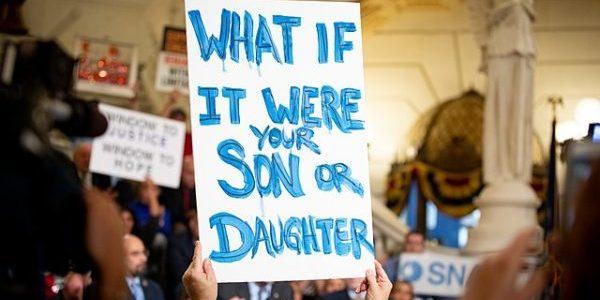(TJ Martinel, The Center Square) – The Washington Sex Offender Policy Board last year recommended the Legislature consider treatment rather than imprisonment for those convicted of possessing or viewing child pornography or caught in an internet sting operation.
The recommendations among several contained in a report to the House Public Safety Committee regarding “treatment alternatives for certain sex offenses; lifetime supervision; failure to register; washouts; and system improvements.”
In 1984, the Legislature passed the Sexual Exploitation of Children Act, which created several new criminal offenses involving the depiction of minors engaged in sexual conduct, including:
- Dealing in child pornography
- Bringing child pornography into the state
- Possessing child pornography
Prior to 2006, possessing child pornography was considered a non-sex offense, until it was reclassified as a sex-offense and reclassified as a level 6 class B felony. Those convicted of it now must also register as a sex offender.
Since 2006, the number of people convicted of possession has increased, along with the time served.
According to the 2022 SOPB report, the average incarceration length for a person convicted of possession in 2019 was almost four years.
Of the 202 people convicted of possessing child pornography between 2015-2019, 82% were first-time offenders, according to SOPB, which also notes that the state does not allow sentencing alternatives for first-time sex offenses.
“Accessing and collecting illegal images is much easier now that they are available from a home computer or smart phone,” the 2022 SOPB report states. “A surprising fact is the rate of child sexual abuse in the U. S. has decreased 64% since 1990. This decrease has occurred simultaneously as the number of available illegal, internet depictions has increased dramatically.”
Citing a 2015 study of 638 individuals released from federal imprisonment, the SOPB report argues that “depiction-only” offenders should be treated separately than “contact sexual” offenders.
“Depiction-only offenders were more likely than contact offenders to be better educated and employed at the time of their arrest,” the report states. “In addition, depiction-only offenders were less likely to have a history of criminal behavior or substance abuse than contact sexual offenders. During a follow-up period of 4.8 years, 3% of the 428 depiction-only offenders and 5.7% of the 210 contact sexual offenders were arrested for a contact sexual offense.”
Citing a separate 2017 study, the SOPB report notes that “the authors suggest depiction-only offenders are a special group of offenders whose criminal behavior is limited to accessing and collecting illegal, internet depictions, and aside from this criminal behavior, these individuals are similar to the average member of the community.”
The SOPB report concludes that “the best available evidence indicates individuals whose behavior is limited to viewing, possessing, duplicating, disseminating, or exchanging illegal, internet depictions are at low-risk of reoffending. Consequently, treatment in the community can be done at a low risk to the community. We believe other individuals convicted of a sex offense who are assessed as low-risk to reoffend are good candidates to be considered for a sentencing alternative that minimizes the use of incarceration and focuses on treatment in the community.”
For example, “an individual who viewed illegal, internet depictions out of curiosity and is a low risk to re-offend may need minimum treatment,” according to the SOPB report.
That specific recommendation received unanimous support among board members, including the Washington Association of Sheriffs and Police Chiefs, but with caveats. While the WASPC wrote in its response to the report that “if system can make a meaningful intervention and engage the individual in treatment, the likelihood of continued sexual offending decreases,” it added that “we have concerns regarding those individuals convicted of dealing in depictions (RCW 9.68A.050) being offered a SSOSA-like alternative. Dealing depictions is more serious than possession/viewing. Much like creating depictions, dealing/sharing depictions further victimizes the actual victims depicted in the images and warrants a more serious intervention.”
In particular, the WASPC opposed a separate recommendation that received mixes support that would offer diversion for individuals convicted of an internet sting or other sex offense not involving an identifiable victim, arguing that “seeking underage stranger victims is predatory behavior and should not be eligible for sentencing alternatives. If an individual was seeking, and making contact with, identifiable juvenile victims on the internet, they would not be eligible for a sentencing alternative. The offense behavior is no different when there is an identifiable juvenile victim compared to an internet sting victim.”

